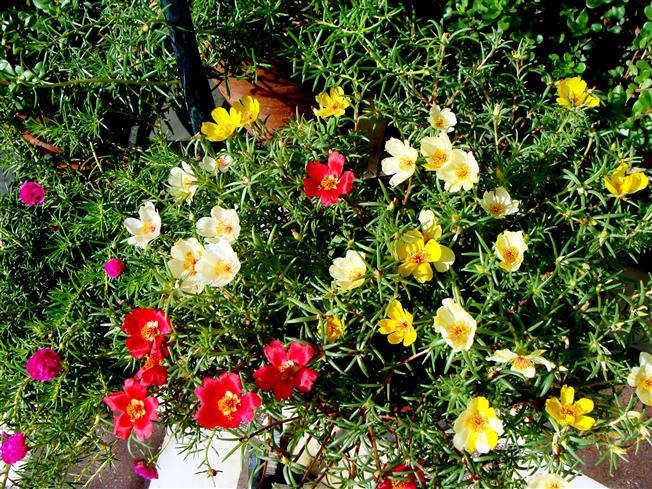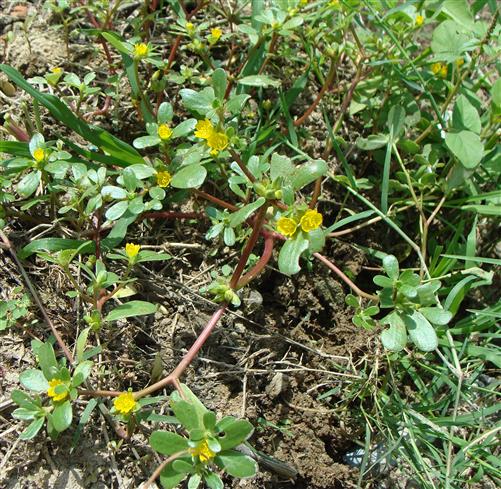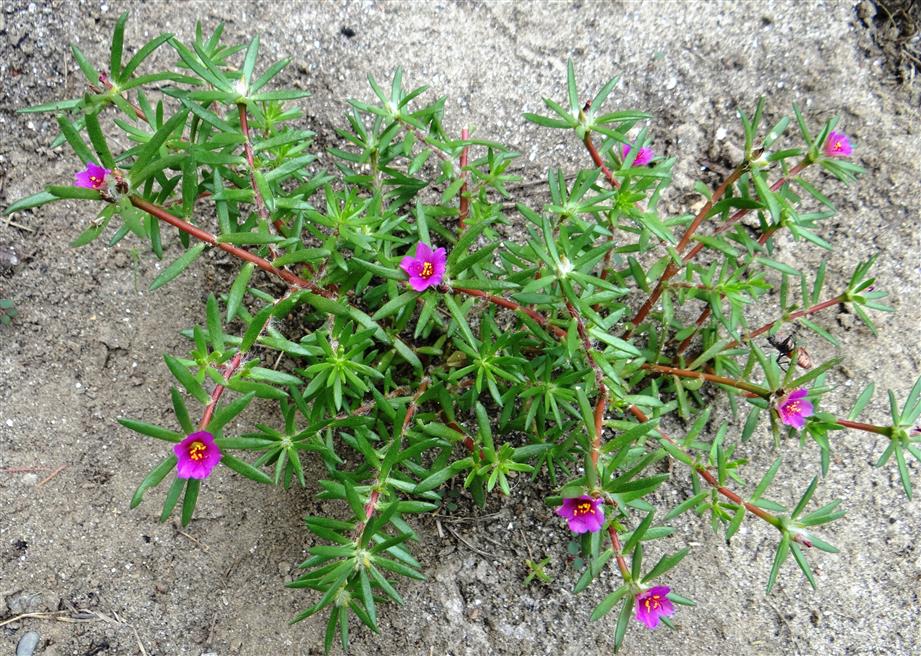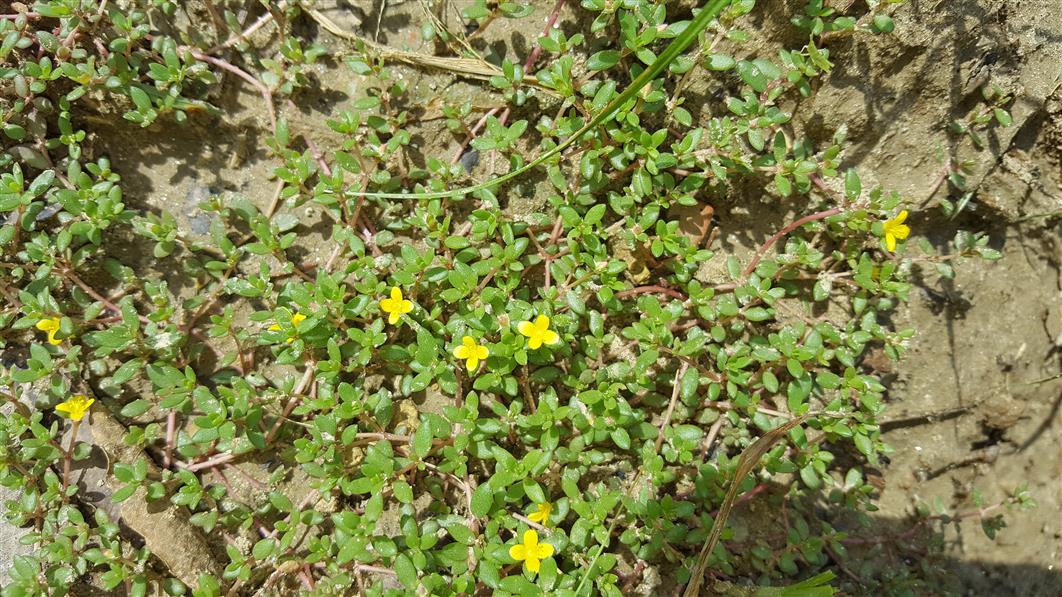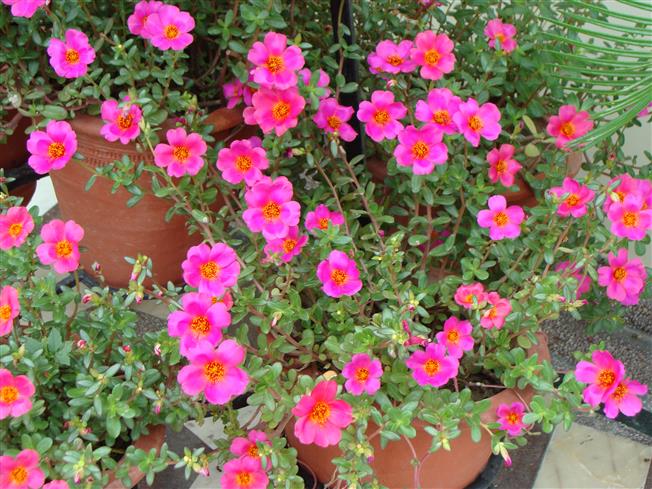PORTULACACEAE
Annual or perennial, usually succulent herbs, rarely undershrubs, usually glabrous except for scales and/ or nodal or axillary hairs. Leaves alternate or opposite; simple, entire, succulent, sessile or petiole poorly defined; stipules scarious or modified into hairs, rarely absent. Inflorescence usually terminal, sometimes axillary, cymose, racemose, paniculate, umbellate or heads of sessile flowers surrounded by an involucre of leaves or flowers solitary. Bracts inconspicuous. Flowers bisexual, occasionally unisexual, actinomorphic, usually hypogynous, rarely perigynous. Sepals 2, rarely more (often regarded as bracteoles), free or basally connate, herbaceous or scarious, anterior sepal overlapping the posterior one, caducous. Petals 4-6, rarely more or less (2 or 3), free or basally connate, imbricate, entire, often brightly coloured, fugacious (short lived) or marcescent (withering but remaining attached with stem). Disk usually absent. Stamens (1-)4-many, antipetalous, free, rarely basally connate or fascicled or adnate to petals; filaments linear or filiform; anthers bithecous, dehiscence longitudinal, introrse. Pistil 1, carpels 2-9, syncarpous, ovary superior, rarely semi-inferior, free or partially adnate to calyx, unilocular, placentation basal or free-central, ovules 2-many; styles 2-8, united, rarely free; stigmas 1-9, elongated. Fruit a membranous or crustaceous globose or subglobose, smooth capsule, loculicidally or circumscissily dehiscent, sometimes opening explosively, rarely indehiscent nut. Seeds 2-many, compressed, globose-reniform.
One genus and 152 species
